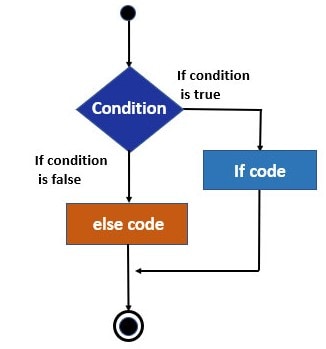
Flowchart for if Else statements – a diagrammatical way to express two alternative outputs of a certain condition, whether fulfilled or unfulfilled.



-->
Decision-making is an essential aspect of programming; every programming language provides different statement criteria to execute different conditions accordingly to cater to the program's needs. The most general statement is an if statement, which executes a block code when a certain condition is true. However, the drawback of the flowchart if statement is that it does not specify the output when a condition is false.
It is where the role of flowchart if Else statement comes; a statement which executes both the true and false parts of a specific condition. This article highlights the manifestation of decision-making using if Else in flowcharts.
The if Then flowchart statement is a two-way system that executes two blocks of statements; it's a kind of conditional flowchart.
If the condition inside the if block is true, the program executes all the statements within that if block. However, if the condition within the if block is false, the program will execute the Else block's statement. If quoted in simple words, the flowchart if Then Else statement demands that "Do the task if a condition is true; otherwise, then do another task".
Understanding a concept becomes super convenient when we link it with some real-life scenarios. Therefore, we have formulated two fictitious workable scenarios where the if Else statements can be applied to generate a directed output.
Take the example of a digital banking system; the if Else flowchart condition can be applied to that banking system, executing a condition, "Whether the account number and pin code are correct"; if this condition is true, the bank will withdraw the user's money. Contrastingly if the account and pin code are false, the bank's database will show an error message to the account holder.
Another example is designing a digital-driven vote-casting system that executes different outputs as notifications based on whether the condition is true or false. The specified condition for the system is "Whether the age of voter is above 18". If the voter's age is above 18, which means that the condition is fulfilled, the system will display the notification, "Congrats! You are eligible for voting". On the other hand, if the condition is dissatisfied, i.e., the voter's age is under 18, the system will notify the voter, "Sorry! You are ineligible to cast a vote."
We all make decisions every day pertaining to several spheres in our lives, such as what to eat for lunch, where to travel for excursions, and more. When we make a decision, we take various conditions into account, like the edibles placed in the freezer or names of the best places to visit. Similarly, the programs are also structured to make decisions based on the conditions and different inputs.
Here, we have conducted a comparative analysis of the if and if Else statement flowcharts for your insight: